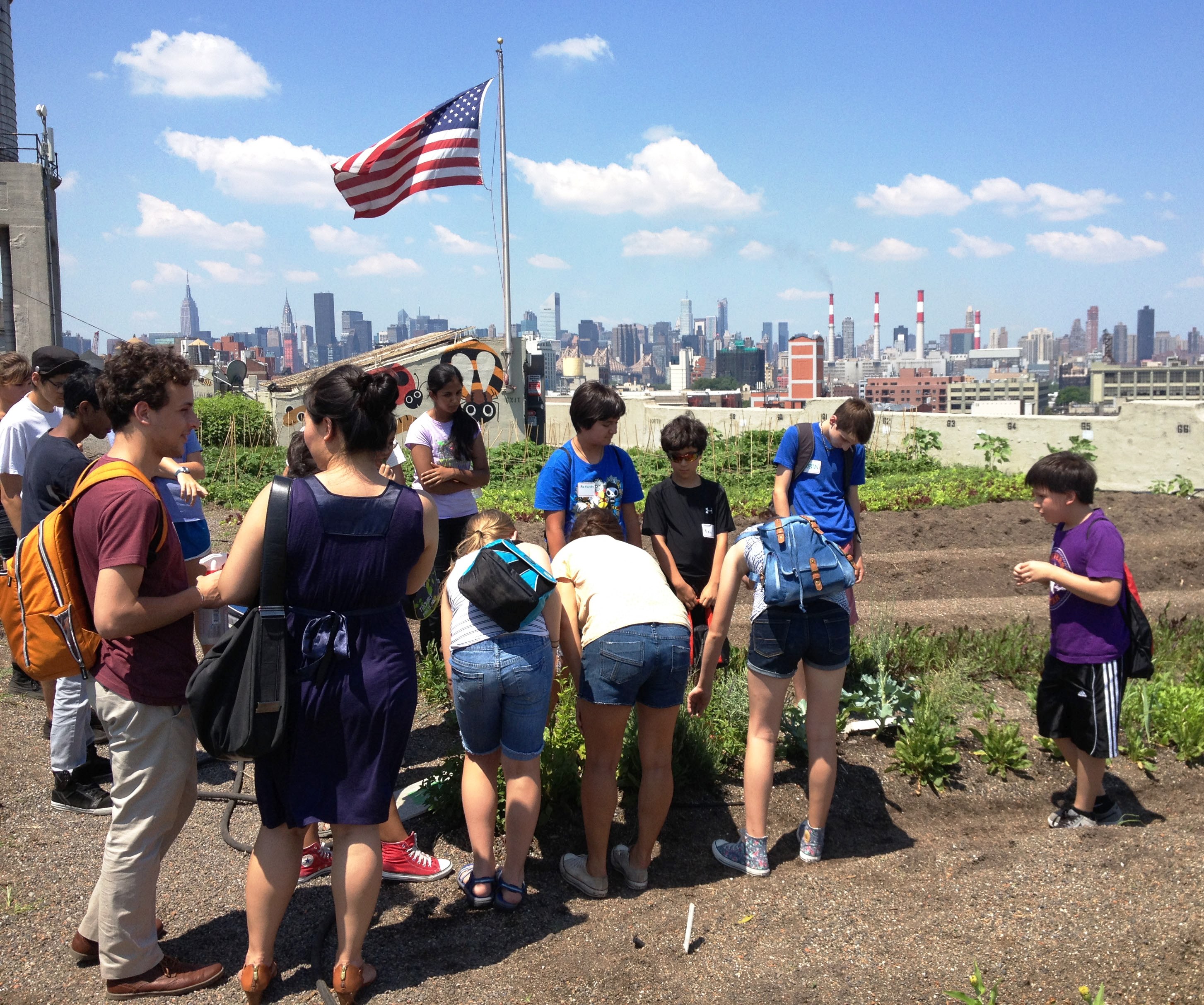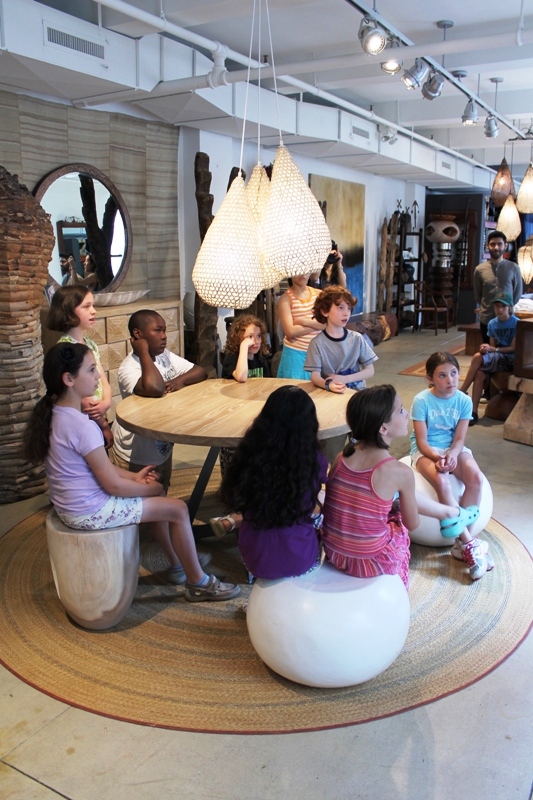by scloonan
At the Center for Architecture Foundation, we are halfway through our popular Summer@theCenter architecture-themed day camps. With topics such as “My Dream House,” “Drawing Architecture,” and “Up on a Roof,” students explore the built environment and create their own sketches and models over the course of one week.
The success of our Summer@theCenter programs is due in no small part to the incredible time, energy, and enthusiasm of our volunteers, many of whom are currently pursuing a course of study in the field of architecture. We asked two of our skilled volunteers, Holly Kang and Mark Zlotsky, architecture students at Syracuse University, to reflect on their experiences so far.
Holly – Fresh and euphoric from my semester abroad in Florence, I was inspired to have a hand in educating younger students with an interest in architecture. The highlights of each week-long program were the field trips to places such as the James Hotel roof deck, Brooklyn Grange urban farm, and the Hearst Tower. The most striking thing for me, as an architecture student was the moments when the students revealed what they thought about architecture. Students in the “My Dream House” program were obsessed with amenities: golden bathroom fixtures, large televisions, chocolate fountains, towel warmers, and the like. These are the amenities that they see published or televised and want to incorporate into their dream homes. How quickly those ideas shift when the students begin to think in three dimensions. The odd corners and closed rooms that made sense in their drawings start to look slightly more foreboding when they are extruded. In other words, these young designers are grappling with the same challenges older architecture students face in the studio. What once looked perfect on paper becomes difficult to translate into reality, which means the 70-inch TV has to go.
Mark – I took this summer to volunteer at the Center for Architecture Foundation, and explore my personal interests in architectural education. Anticipating lessons of form, scale, context, and following the “rules” of architecture, I didn’t foresee receiving a lesson in freedom. Their projects didn’t boast cantilevers or axial colonnades. Instead, the proper way to get to the second floor would be by robot arm. Untouched by the plague of reality, I am getting the opportunity to see a world without conventions. As an educator, you don’t critique the students’ projects – you just make sure they know what they’re doing. Kids don’t care much about the physical quality of their model per-se, but they do care about the idea that binds the entire project together. The dream houses and dream playgrounds weren’t formal expressions, geometric play, or harmonic discoveries, but a collection of moments and programmatic ideas. What seems so simple on the surface, so naïve, took a sharp turn to push limits. Why can’t we circulate via Ferris wheel? Why can’t we change size, transforming a bathroom into a ballroom?
Summer@theCenter week-long architecture and design programs for students entering grades 3-12 run Monday – Friday 9:00 AM – 4:00 PM here at the Center. Spots still remain for ChairDesign/Build 08.19-23.13


